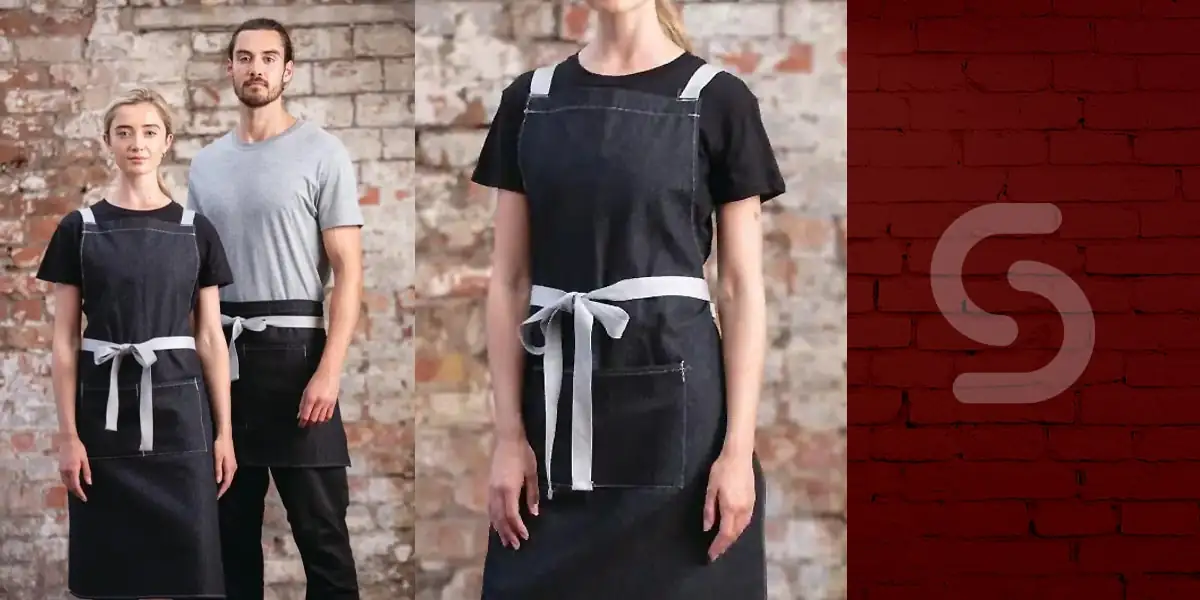How To Order Personalised Illuminated LED Menu Covers
Available in a range of sizes, our brand new illuminated menu covers are all the rage. Our illuminated LED menu
Available in a range of sizes, our brand new illuminated menu covers are all the rage. Our illuminated LED menu
Shop across our entire range of catering & hospitality products with up to 70% off until midnight Monday 1st December.
The leather menu cover can play a crucial role with customer’s first impressions. At Smart Hospitality Supplies, we have made
Your restaurant’s menu is more than just a list of dishes you offer – it’s your brand’s voice, your customer’s
Kitchen workers constantly face high temperatures, hot surfaces, and open flames. Not to mention the unpredictable mishaps with hot oil or hot water. It’s a busy kitchen environment that demands protective clothing to prevent burns and ensure the wearer’s skin is well shielded. This is where fire-retardant (FR) chef aprons come into play. This protective barrier, often worn over chef’s jackets or chef whites, is a blend of science and fabric engineering designed to keep chefs safe. Let’s explore fire-retardant chef aprons and their key features.

When a fabric is designated as inherently fire-retardant, the flame retardancy will last for the life of the fabric. This is because the flame-resistant properties have been woven into the fabric fibre, providing long-lasting protection. These aprons can typically be laundered or dry-cleaned as recommended by the manufacturer.
Some aprons are made from fabrics that have been topically treated with chemicals to make them flame retardant. Over time, particularly with repeated cleaning, the flame retardancy of these fabrics will dissipate. These fabrics must be dry-cleaned with a non-liquid cleaning agent to maintain their protective qualities.
A cotton blend, including aprons, is popular for chef’s clothing. Cotton has some level of flame resistance, but when blended with materials with naturally flame-resistant properties, the resulting fabric offers enhanced protection.
The weight of the fabric also plays a crucial role in protective clothing. Lightweight fabrics offer less thermal insulation but might be more comfortable in a hot kitchen. Heavy fabric offers better thermal effects but might become cumbersome during long cooking sessions.
Flame retardants work by coating the flammable fabrics with a mineral-based barrier. This coating prevents fire from reaching the material’s fibres, protecting the wearer. This barrier benefits a work environment where hot liquids, sizzling oil, and high heat are everyday elements.
Besides being flame resistant, chef aprons often have added features like thermal insulation to protect against hot surfaces and liquids. Some are also designed to be wrinkle-resistant, ensuring a professional appearance.
The design of the apron, including elements like a neck strap and the outer material, is also considered. The exterior often has enhanced thermal properties to resist flames and heat better.
Interestingly, lab coats, commonly used in scientific environments, also share some similarities with chef’s uniforms regarding their need for flame resistance. However, the requirements for chef’s jackets, pants, and aprons are usually more specific to the kitchen environment.
Taking proper care of your fire-retardant chef apron is essential. Since the durability of chemically treated aprons can be compromised by improper cleaning, always follow the manufacturer’s guidelines.
The world of chef’s uniforms has significantly evolved to include FR clothing like fire retardant aprons. Understanding the materials, fabric weight, and treatments can help kitchen staff make an informed choice. With options ranging from cotton fabric to specialised FR fabric and from lightweight to heavy-duty styles, there is something to suit every need in today’s culinary landscape.
A scientifically backed protective layer can make all the difference in the high-risk ballet of a busy kitchen, where cross-contamination, open flames, and heat sources are abundant. So the next time you see a chef manoeuvring around the kitchen in their chef’s hat and apron, know there’s a science to their style, designed to keep them safe and cool while maintaining a professional appearance.
Check out this blog if you want stylish chef aprons with patterns.



A Company Registered in England & Wales Company Registration Number: GB05069286 VAT Registration Number: GB867112521 Smart Hospitality Supplies is a trading division of The Smart Marketing & Media Group Limited
